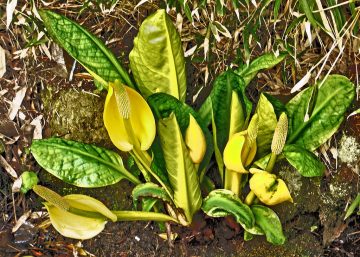Honing Pattern Recognition Skills through Dance
Posted in artSTEAM, Blog Posts, Elementary & Middle Years, Fine Arts, Inclusive Practices, Secondary | Tagged with ADST, dance, fine arts, Free, resources, Teacher Use
Teaching dance steps can be an effective and engaging way to demonstrate and explain the concept of pattern recognition. Pattern recognition is one aspect of computational thinking and is integral to the Applied Design Skills and Technologies Curriculum (ADST BC Curriculum). It is useful in fields such as: mathematics; computer science (programming and machine learning); scientific discovery and research (by making common connections between disparate findings); and more specifically in the fields of biogeography and evolutionary biology.
Recently, in a workshop for teacher candidates in the BEd program at UBC, basic dance steps across various styles were demonstrated with attendees encouraged to ‘dance along’. As participants observed and practiced the steps, they also noticed and discussed how different dance styles relate to each other and hypothesized from where different steps might have originated.
Some key take-aways from the workshop:
- Dance is perfect to demonstrate this in that it teaches how to break movements down into their most basic forms.
- Learning dance steps involves composition and decomposition of patterns and is, therefore, related to coding and computational thinking.
- The act of being able to practice dance steps can help improve pattern recognition skills in general, and can be applied to the curriculum competencies in STEM subject areas and is specifically connected to the BC ADST curriculum.
- “Solving problems is a creative process” and I would add that there is also creativity involved in being able to recognize patterns and then apply this ability across different contexts, subject areas or tasks.
Applied Design Skills & Technologies:
Pattern recognition is a cross-curricular skill or competency that is important in all subject areas. Computational thinking is, in large part, about recognizing patterns and is an important aspect of the Applied Design, Skills & Technologies Curriculum in BC (ADST). A post to the “Tech-based Teaching” blog, aimed at K-12 teachers, helps us understand the link between pattern and computational thinking (a key aspect of the ADST curriculum).
A blog post written by the company HUSPI, contains a fairly comprehensive explanation of Pattern recognition in Machine Learning. While it is from a ‘for-profit’ company and contains the expected promotion of software they have developed, it provides relevant examples and explains how pattern recognition “simplifies the analytics” results and provides a reliable source for business intelligence insights, which is critical for organizations and the decision-making process. One example provided is how the Google Translate App uses optical character recognition (OCR) allowing you to get a translation using just the camera on your phone. You can read the full blog post on the company’s website.
The Sciences:
In evolutionary biology, pattern recognition skills are essential for making connections in research and to help identify differences in the evolution of species across geographical areas. For example, the skunk cabbage along the BC coast is very similar to that found in Siberia with the exception of a difference in leaf colour (this coloured leaf is a modified leaf called a spathe).
The skunk cabbage found along the west coast of BC has a yellow spathe while that found along the east coast of Siberia (and some areas of Japan) has a white spathe.
Dance:
Jacqueline’s Dance Workshop Video
In the workshop, references were also made to cues and how they are interpreted and how they are universal across the partnered dances, and are also present in solo dances such as those from West Africa and Indonesia.
Where West African dance make use of verbal cues, Indonesian (Balinese in particular) dance makes use of eye cues. This can also be seen in Bollywood dance from India. Interestingly, these eye movement cues are not common in other dance styles. For an example of eye movements in Balinese dance, this Youtube Video of a Balinese Legong Dance from Ubud, Bali. Minutes 2:08 – 2:35 and again from 4:45 – 5:38 highlights clearly the use of eye movements.
The map below, along with the accompanying website, helps tell the story of strong connections between music and dance in Africa and that of Central and South America due to the African diaspora.
During the workshop, we noticed:
- Some similarities across styles including: basic steps for hustle, salsa and east coast swing which all have a step back on the right foot (for follows and the opposite foot for leads), and then some variation of placing your feet side by side.
The above are 3 or 6 count step dances (whereas bachata which is similar to salsa, is a four-count dance, and lindy hop which is similar to east coast swing, is an 8-count dance).
- References to arm stylings were made and how there are similar movements between salsa and hustle, in particular. Turns (inside and outside) are also very similar between the various partnered styles.
For solo dances, arm styling similarities can be seen between West African and salsa dance (hair brush arm movement, in particular). And also, West African and hip hop (such as arm rolls while doing basic steps). There is also a “Charleston-like” movement that is similar between the West African and East coast swing styles.
- Similarities between basic steps in solo dance styles include having various “home steps,” which is the case for hip hop and also West African dance. A home step is a basic step that you can “fall back on” or “keep coming back to” as a resting step between more advanced patterns.
- We also discussed differences in weight shifting and grooving and how each dance has its own “attitude” or style, and how this also might give cultural clues.
References:
BC Grade 12 curriculum for computer science:
BC’s Redesigned Curriculum. (n.d.). Retrieved November 17, 2020, from https://curriculum.gov.bc.ca/curriculum/adst
African diaspora (in music):
(n.d.). Retrieved November 17, 2020, from https://www.albany.edu/faculty/jhobson/middle_passages/latin.html
Youtube Video of a Balinese Legong Dance from Ubud, Bali. Minutes 2:08 – 2:35 and again from 4:45 – 5:38
Shadows Galore. (2014, June 28). Balinese Legong Dance – Ubud, Bali [Video]. YouTube. URL https://www.youtube.com/watch?v=k9lNc4fu8Zc&feature=youtu.be&t=128
A post to the “Tech-based Teaching” blog, aimed at K-12 teachers
Editor, T. (2019, August 22). Thinking in Patterns: A Brief Intro to Pattern Recognition. Retrieved November 17, 2020, from https://medium.com/tech-based-teaching/thinking-in-patterns-a-brief-intro-to-pattern-recognition-4c33258acad
Pattern Recognition in Machine Learning
Gimon, A. (2019, November 13). Software Development & IT Consulting. Retrieved November 17, 2020, from https://huspi.com/blog-open/pattern-recognition-in-machine-learning
Biogeography and pattern recognition (abstracts)
Biogeography. (n.d.). Retrieved November 17, 2020, from https://www.sciencedirect.com/topics/agricultural-and-biological-sciences/biogeography
Skunk Cabbage: A BC Plant Reaches Across the Pacific
Dr. Richard Hebda Contributor. (2014, December 15). Skunk Cabbage: A British Columbia plant reaches across the Pacific. Retrieved November 17, 2020, from https://curious.royalbcmuseum.bc.ca/skunk-cabbage-a-british-columbia-plant-reaches-across-the-pacific/
Guest post by Jacqueline Boivin, Scarfe Sandbox Project Assistant and Virtual Peer Mentor, Winter 2020; edited by Yvonne Dawydiak.



